"The whole fabric of the space-time continuum is not merely curved, it is in fact totally bent." -Douglas Adams
As many of you know, if you take a whole bunch of mass, and you've got nothing going on except gravity, it's going to gravitationally collapse. And if atoms, nuclei, pressure, and nuclear reactions don't (or can't) prevent that gravitational collapse from running away, you're going to wind up with a black hole.
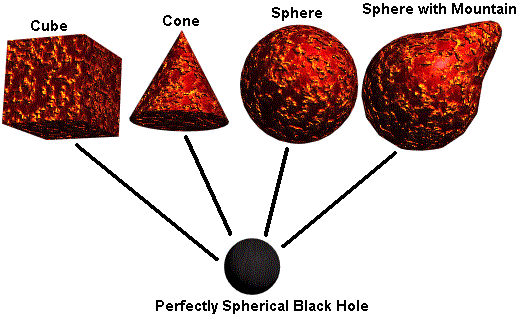
But last week, I told you that if you took all the matter in the Universe and shaped it into a cylinder, you'd actually wind up with a huge cylinder of solid matter, as big around as the Earth's orbit around the Sun!
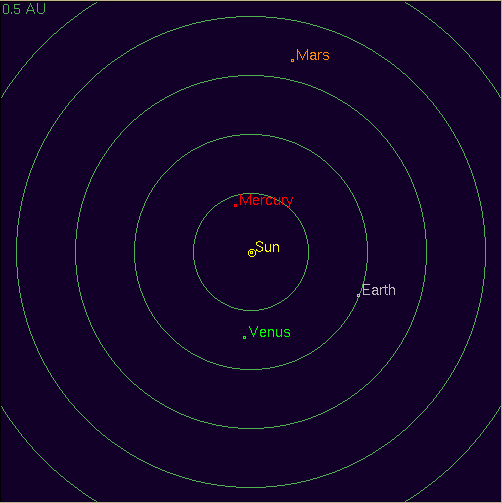
But this cylinder, unlike the other shapes, wouldn't collapse down to a black hole. A black hole would give you, literally, a point-like hole in spacetime (assuming that there aren't violations of, for instance, the strong energy condition, which could happen in theory).
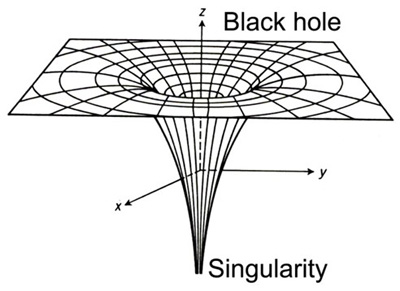
The fact that we observe evidence for black holes in many different regions, most prominently at the center of every large galaxy (including our own), tells us that we're on the right track as to what's going on.
But what if, instead of a hole, you had a huge string? What if, instead of a bunch of point-like (zero-dimensional) holes in your spacetime,
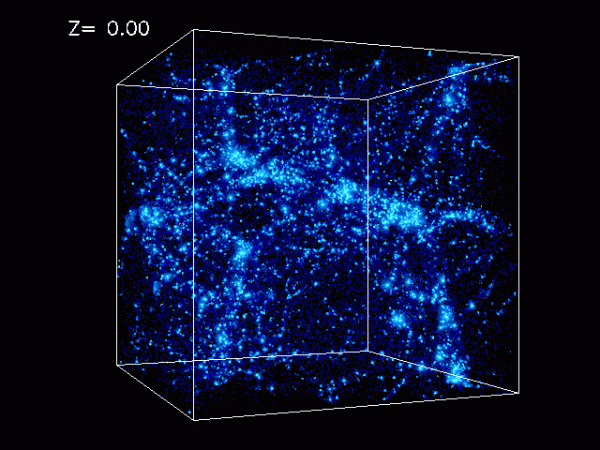
you had a network of string-like (one-dimensional) defects throughout spacetime?
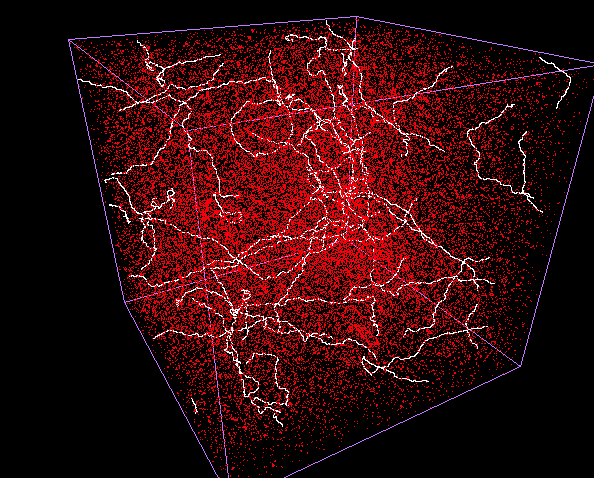
While this might remind some of you of the Nexus from Star Trek: Generations, this is a real possibility in theoretical physics! (Although it hasn't been observed.)
We learn something interesting about the expansion of the Universe from playing around with this idea of a cosmic string, or network of strings. (The wikipedia page is so bad I refuse to link to it.) First off, if we fill spacetime with 0-dimensional defects (point-like masses), the expanding Universe slows down its expansion, as gravity works to counteract the expansion. A model Universe, full of point-like black holes, can eventually have the expansion rate asymptote to zero, decelerating but never turning around. (Following the curve labeled B, below.)

Yet if that same Universe is full of cosmic strings (1-D defects), the expansion rate doesn't decelerate! It follows curve C above, and a Universe filled with cosmic strings will continue to expand, with the expansion neither accelerating nor decelerating.
But you may decide to make things a little more interesting. What if, instead of 0-D or 1-D defects, you filled the Universe with domain walls, a 2-D topological defect? (Instead of a point or a string, a "sheet-like" defect in spacetime.)
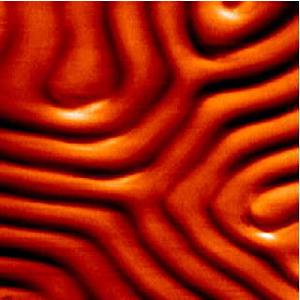
Of course, this is observationally ruled out, too, but just for the fun of it, you get a Universe whose expansion rate accelerates! Mind you, it doesn't accelerate the same way our observed Universe does; it doesn't quite do it as quickly.
But if you change the dimension of your defects in spacetime, you can ad-hoc your way to any expansion rate you want.
And interestingly enough, if you decide to tweak your toy model of defects in spacetime to reproduce dark energy -- the observed accelerated expansion of the Universe -- what do you suppose you get?
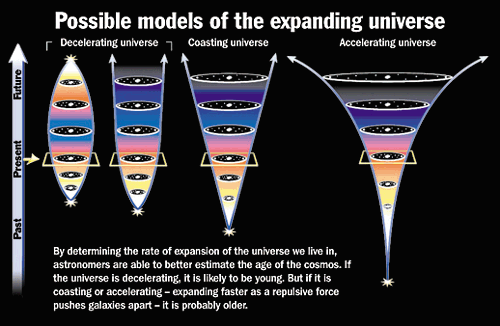
Three-dimensional defects, known technically as textures! In other words, if you filled the Universe with the right amount of 3-D defects in spacetime, the expansion rate you'd see would match up perfectly well with the observed dark energy!
Before you get too excited, let's be realistic, here. We've never detected any of these topological defects in 1, 2, or higher dimensions, so they're only theoretical constructs. In principle, however, we know how we could make or generate them, and it's pretty straightforward! ("Knots" in spacetime, theoretically caused by many things, spread out widely enough over 1, 2, or more dimensions.)
Searches for evidence of strings, domain walls, textures, and other defects are still ongoing, and although they've come up empty so far, detection of say, a texture, could revolutionize the way we think about dark energy! Some food for some deep (speculative) thoughts on a Monday; enjoy!
- Log in to post comments

So. Completely. Cool.
Why do you concentrate so much on GR where we already know it is beyond its domain of applicability? A singularity tells us that a theory at that point is probably no good. There is from an operational standpoint on principle no way to observe a singularity (infinite resolution = infinite energy). A black string is unstable. However, your blog is all about talking about these defects as if they are good predictions. A black hole is a good prediction (stable, event horizon is a big enough thing), but all these defects, singularities, worm holes, ..., they are artifacts of the math of a theory with limited domain of applicability. GR is likely emergent, it is the thermodynamics of something else, meaning: there are no knots in space time, they only make for sensational blog posts with mysterious pictures maybe and for publications of scientists desperate for publications.
I thought we were 3-D defects in space-time.
"Before you get too excited, let's be realistic, here. We've never detected any of these topological defects in 1, 2, or higher dimensions, so they're only theoretical constructs."
From the end of his post. What you say is not unknown, but it is utterly unhelpful.
they only make for sensational blog posts with mysterious pictures
Exactly! Now go somewhere else, you pedantic twat.
As with "climate modeling", simply reproducing observations wouldn't be enough though - some testable predictions must be made. For a few centuries now mathematicians have realized that they can generate any number of series of expressions which would allow you to match a set of parameters with an observation to whatever degree of precision you want - but to demonstrate that a model really works it must be tested outside the domain of past observations.
Whether these events exist or not in reality is somewhat irrelevant. They can be produced mathematically via simulation, and that alone is worthy of a very interesting blog post.
Atleast thats the way I see it.
Nice xplanation of the hypothetical cosmic strings. a useful thought idea model, that doesn't go far enough, i.e. not crazy enough to be real posibility. but moving in the right direction. add a universe of antimatter and xtra dimensions and cosmic membranes (instead of strings) and it might work
good job.
The model idea is surely interesting and the explanation but still hypothetical.
(OT) Admittedly of smaller scale... but still cool:
"Study suggests dinosaurs killed off by more than one asteroid" http://www.physorg.com/news202449869.html
Now back to the really big stuff!
I'm curious about them being observationally ruled out. (Not to say I believe they exist; this is more of a hypothetical.) The always-fun How to Destroy the Earth page mentions cosmic strings, and notes that *if* they exist, there are only about ten of them in the entire universe (not sure if it's literally entire, or "just" observable, but either way...) What I'm wondering is if we'd necessarily have observed 2D or even 3D defects, or if they too might be so sparse that it's possible we wouldn't even if they exist.
Or if this is where theory flies so far afield it's not even really science any more, which is what I suspect. :P
"A black hole would give you, literally, a point-like hole in spacetime (assuming that there aren't violations of, for instance, the strong energy condition.."
But Wiki notes: "The strong energy condition is hardly ever taken seriously nowadays."
And since, the only potentially "observable" things are not "a bunch of point-like (zero-dimensional) holes" but a bunch of 2-dimensional membranes called black hole event horizons (which by the way are spatially orthogonal to our visible universe) and the observable universe event horizon (ditto); why not skip the cosmic string theory and go right to cosmic membrane theory?
Nice post. And thanks for the link to the cosmic string book.
Nice idea - what would these 3D defects look like?
@MarkeD: Need they look like anything? What does an electron look like, or what does gravity look like? If it looks like anything, I'll bet it looks like chicken.
Ethan, can we tell that the blackholes at the centers of galaxies are in fact zero dimensional? Or could they be three dimensional at a scale we can't resolve? In which case, would they be appropriate sized/distributed/etc. to cause that change in thinking? (My guess would be no...?)
MadScientist, I think MarkeD might have just meant, "what sort of observation would indicate that these 3D defects existed," e.g., how would we know if we've seen one? (Not literally what do they look like.)
"(The wikipedia page is so bad I refuse to link to it.)"
Rewrite it.
;)
Thamks these 3D defects existed," e.g., how would we know if we've seen one? (Not literally what do they look like.)
I'm reading about Hubbleâs latest view of a Galaxy who's (1)"light traveled 13.2 billion years to reach Hubble". What am I missing here? For light to travel 13.2 billion years the object producing the light must have been 13.2 billion light years less the rate of expansion of the universe away from where Hubble is now. So (1)"480 million years after the big bang" the expansion of the universe must have been significant enough to create a distance we see today equal to 13.2 billion light years less the rate of expansion over 13.2 billion years. Now this is where it gets odd for me. Light travels at (2)"299,792,458 m/s", thatâs quite quick so in 13.2 billion years the light would have travelled quite a distance. This is where I get a bit confused, partly because I don't know the rate of expansion of the universe. In simplest terms I see that the universe must have expanded faster than light for some time to get this newly observed galaxy far enough away from Hubbleâs present position so that it could take light 13.2 billion years to get to Hubble. Now I have read that the expansion of our universe is accelerating(3). The acceleration of the expansion of the universe must not have been constant, it must have decelerated before itâs current acceleration? WOW, Iâm super confused here. Please point me to where I can get some context on the rate of expansion of the universe over time to help me become less confused.
(1)http://www.nasa.gov/home/hqnews/2011/jan/HQ_11-025_Hubble_Distant_Galax…
(2)http://en.wikipedia.org/wiki/Speed_of_light
Taking relativity into account, well my dim understanding of it, if the early universe was spinning very fast with significant gravitational force time dilation could answer the observed times and distances we are observing today.
I notice that the "Possible models of the expanding universe" section does not have any oscillatory models which do not contain an explosion at the start. Was this an oversight?
I seem to have come late to this party. I'm working on ELI stuff. I'm shokecd by how bad the Telegraph article is and I agree with some comments above that we are not doing ourselves any favours by promoting the machine in this way. ELI will not get closer than two orders of magnitude *below* the Schwinger limit (at least not for the foreseeable future). This doesn't mean that there is no chance of seeing the Schwinger effect, but it is not the first experiment they'll be doing. I think the attosecond science, medical imaging, radiography cases for ELI are perhaps stronger, but that's not my area and it seems the higher-ups want to keep the fundamental physics aspects in the public eye, and that seems to require this ridiculous sensationalism. Quite how committed they are to doing QED experiments well, time will tell.Also depressing is the list of comments in the Telegraph article which reveals both the woeful levels of scientific education in the UK and the abstract terror which such press releases can engender in the public eye. People are actually _scared_ that ELI will kill us all. Of course you can't stand up and say oh come on, it's just a big laser pointer without jeopardising both your funding and your prospects in the field.